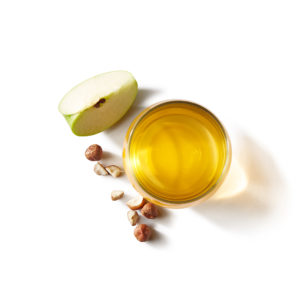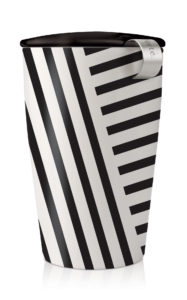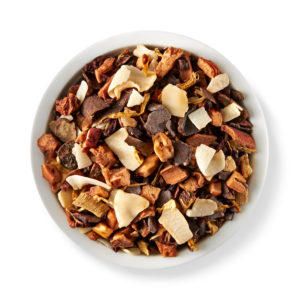
Millennials consume tea and coffee equally, unlike other demographics, where coffee still dominates.
Tea “is becoming more and more a great beverage option,” says Billy Dietz, tea development specialist at DAVIDsTEA. It can be enjoyed hot or cold and contains no sodium, fat, carbonation or sugar, along with other benefits. People “are looking for alternatives that fit a healthier lifestyle.”
Overall, about 85 percent of tea in the U.S. is iced or in ready-to-drink bottles.
Consumers today are open to experiencing tea in new ways as trends such as health and wellness build. Many people want to become more mindful, for example, and tea is a perfect complement to achieve that mindset.
“The metaphysical power of tea to align the mind, body and spirit is at the heart of drinking a great cup of tea,” says Stuart Gold, creative officer, Tea Forté. “With Starbucks putting cups of tea in more hands, it is becoming the new ‘it’ drink—which is interesting since the new ‘it’ is a 5,000 year old beverage.”

One of the top trending teas right now is matcha, a powdered green tea traditionally served hot in Japan. Matcha is the number one search term for tea, Gold says. Unlike in Japan, however, matcha is usually blended with other flavors or milk in the U.S. to make it more in line with Americans’ tastes. Its popularity shows how consumers are looking to try new flavors, and make tea drinking more of an experience.
Consumers in the states also have a sweet tooth, and many new teas have a dessert-like edge. Teavana, for example, launched three such tea options this fall: Apple Pie a la Mode, Tiramisu Black Tea (which includes a touch of real Scotch Whiskey) and Caramel Truffle Herbal Infusion.
Mixing different flavors, in fact, defines modern tea-drinking in the U.S., as consumers like to try unusual or exotic combinations. DAVIDsTEA uses non-traditional tea ingredients such popcorn and candy sprinkles, Dietz says. This fall, the tea company debuted its Warm & Cozy Teas, which included the returning seasonal Coffee Cake blend, as well as the new Chocolate Covered Almond, a black tea blend that was inspired by the “iconic” Hershey’s milk chocolate almond bar.
For consumers concerned with their sugar intake, the tea industry is addressing that as well, and more unsweetened options have come onto the market, says Vanessa Facenda, editor of the industry publication Tea & Coffee Trade Journal. In addition, the number of organic and natural teas available for the eco-friendly crowd is increasing as well.

The majority of American consumers use teabags because they are easy and convenient, Facenda says. Tea aficionados prefer loose-leaf tea, but “loose-leaf tea is more work and more time consuming so many consumers are hesitant to try it,” she says. However, “loose-leaf tea allows for a better cup of tea, as the tea leaves are allowed to expand and unfold.” More travel mugs with infusers are now available so loose-leaf tea lovers can enjoy their favorite beverage on the go.
For people who are ready to leave bagged tea behind but are not ready for loose-leaf tea, Facenda points to sachets and pyramid bags as the perfect stepping stone.
Many consumers are also unsure of how long tea needs to steep. “At a café, tea drinkers are given hot water and a bag and it’s up to them to remove the bag at the appropriate time,” Facenda notes. “Tea must be properly steeped or the true flavor will be lost—over-steeped the tea will be bitter, under-steeped weak.”
Tea makers have strived to make the process easier. “All of our teas come with handy steeping instructions,” Dietz says.
The tide here is turning for tea. Teas from non-traditional countries of origin, such as Nepal and Vietnam, for example, are being embraced by the North American market, Dietz says. “While consumers respect all the traditions that made tea such an incredible beverage, they also know that traditions can sometimes evolve. This keeps a portion of the market adaptable and willing to always try something new.”
Great article, interesting to see where things are going with the industry. Are we seeing any particular trend toward the inclusion of fruits versus spices when they’re being added to “desert” teas? Also for unsweetened teas that are becoming more common, are we seeing customers siding more with green tea or black tea? It seems like I see more unsweetened black tea, but I’ve seen a few green teas with nothing added starting to appear from more popular brands.
Hello, Ron! Thanks for your comments. I spoke to Vanessa Facenda, the editor of Tea & Coffee Trade Journal, and she said that the addition of fruit and spice flavors depends on the season, rather than being a “desert” tea trend. In the summer, for example, teas will have more fruit flavors, while in the colder months teas will have more spices. Regarding your other question, black tea still dominates marketshare, though the green tea category is growing. Hope that answers your questions! Thanks for reading.
Hello, Ron! Thanks for your comments. I spoke to Vanessa Facenda, the editor of Tea & Coffee Trade Journal, and she said that the addition of fruit and spice flavors depends on the season, rather than being a “desert” tea trend. In the summer, for example, teas will have more fruit flavors, while in the colder months teas will have more spices. Regarding your other question, black tea still dominates marketshare, though the green tea category is growing. Hope that answers your questions! Thanks for reading.